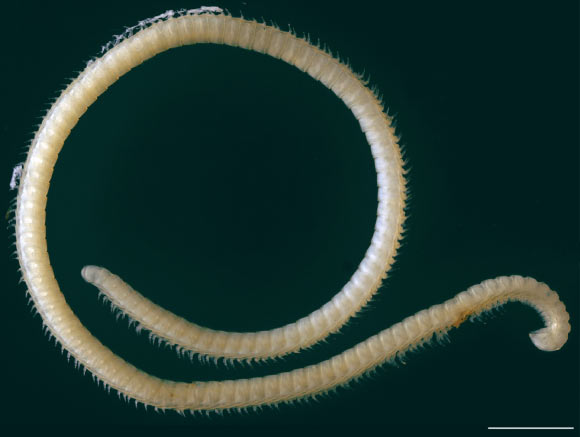A new species of millipede, called Illacme tobini, has been discovered in a cave in Sequoia National Park, California.
The new species was identified and named by millipede taxonomist Dr. Paul Marek of Virginia Tech and his colleagues from Hampden-Sydney College and the University of Texas, Austin.
It belongs to the millipede genus Illacme, and is the closest cousin of the leggiest animal on Earth, Illacme plenipes.
“The genus Illacme is the sole representative of the family Siphonorhinidae in the Western Hemisphere,” Dr. Marek and co-authors said.
“Members of this family are thread-like eyeless millipedes that possess an astounding number of legs.”
Illacme tobini is known from a single male collected in Lange Cave in Sequoia National Park.
“I never would have expected that a second species of the leggiest animal on the planet would be discovered in a cave 150 miles away,” Dr. Marek said.
“Its closest relative lives under giant sandstone boulders outside of San Juan Bautista, California.”
Illacme tobini has ‘only’ 414 legs, compared to I. plenipes’ 750, yet, it has a similar complement of bizarre anatomical features.
It has strange-looking mouthparts of a mysterious function, four legs that are modified into penises, a body covered in long silk-secreting hairs, and paired nozzles on each of its over 100 segments that squirt a defense chemical of an unknown nature.
Research describing Illacme tobini is published online in the journal ZooKeys.
_____
P.E. Marek et al. 2016. A new species of Illacme Cook & Loomis, 1928 from Sequoia National Park, California, with a world catalog of the Siphonorhinidae (Diplopoda, Siphonophorida). ZooKeys 626: 1-43; doi: 10.3897/zookeys.626.9681








